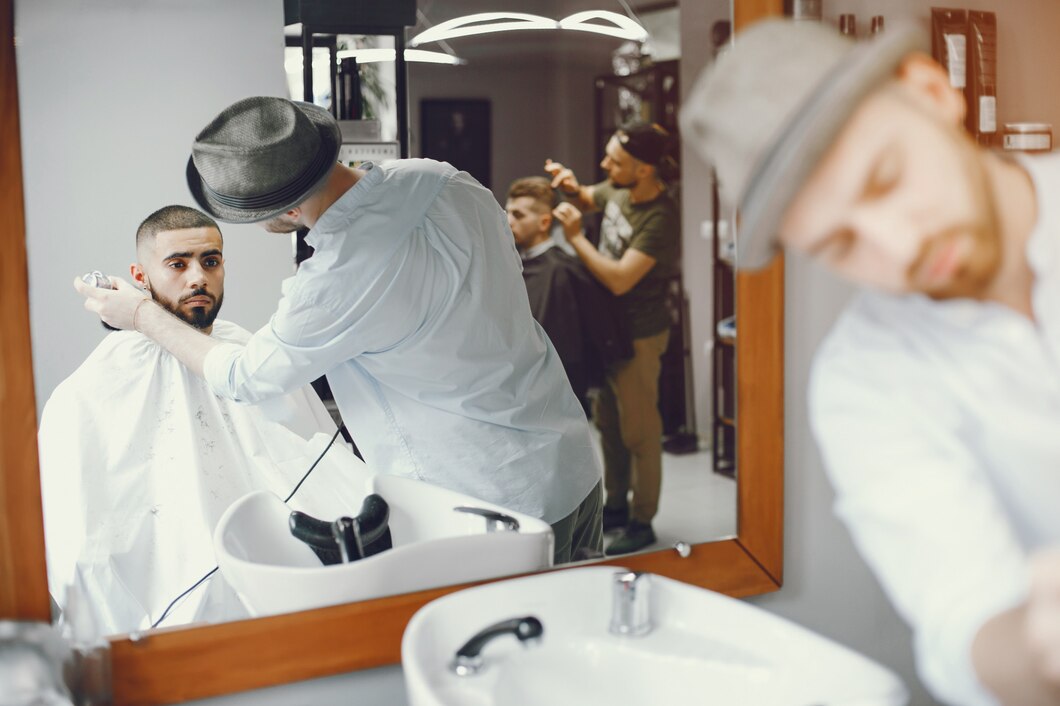Business
How do factories ensure the quality of their hairpieces?
Published
4 months agoon
By
john fedrik
In the booming hairpiece industry, factories are under constant pressure to deliver high-quality products that meet the expectations of discerning consumers. But how do they ensure the quality and durability of their hairpieces? From sourcing the finest materials to employing stringent quality control measures, factories employ a range of techniques to achieve excellence.
One key aspect is the careful selection of materials. High-quality factories invest in sourcing ethically-produced, premium-grade human or synthetic hair to create their hairpieces. By choosing the best raw materials, they can ensure the end product is both lifelike and long-lasting.
In addition to material selection, factories also employ rigorous quality control processes, which involve thorough inspections at every stage of production. This includes inspecting the hair strands for consistency and strength, checking the stitching and construction for durability, and evaluating the overall appearance and styling.
Moreover, some factories integrate advanced technologies such as computerized design and 3D modeling to ensure precision and accuracy in the manufacturing process. These technologies allow for meticulous measurements and customization, resulting in hairpieces that fit and blend seamlessly with the wearer’s natural hair.
With a commitment to quality materials and meticulous craftsmanship, factories strive to consistently deliver hairpieces that exceed expectations and serve as confidence-boosting accessories for individuals seeking hair enhancement.
Importance of Quality Control in the Hairpiece Industry
Quality control is the backbone of the hairpiece industry. Without strict adherence to quality standards, hairpiece manufacturers risk not only their reputation but also the satisfaction and safety of their customers. The importance of quality control lies in its ability to ensure that each product that leaves a factory is free of defects, meets customer expectations, and maintains industry standards. br/>
In the competitive landscape of hairpiece manufacturing, the quality of products can make or break a company. Consumers today have access to a wide range of options, and they are more informed than ever before. They demand hairpieces that not only look natural and stylish but also are durable and comfortable to wear. A single mishap in quality can lead to negative reviews and a loss of consumer trust, which can be detrimental to a business. br/>
Moreover, strict quality control helps manufacturers avoid the costs associated with returns and exchanges due to defective products. By ensuring that all hairpieces are crafted to perfection before they reach the market, factories can minimize financial losses and protect their brand’s integrity. In turn, this fosters customer loyalty, as buyers are more likely to return to a brand that consistently delivers high-quality products. br/>
Key Factors Affecting the Quality of Hairpieces
The quality of hairpieces is influenced by a variety of factors, from the raw materials used to the skills of the craftsmen who create them. One of the most critical factors is the source and quality of the hair. Whether it’s human hair or synthetic fibers, the texture, strength, and color consistency play a significant role in the final product’s aesthetics and durability. br/>
Another vital factor is the hairpiece construction. The methods used to attach hair to the base, whether through hand-tying, machine-sewing, or other techniques, determine how natural the hairpiece looks and how long it will last. The base material itself must also be considered, as it needs to be durable, breathable, and skin-friendly to ensure comfort for the wearer. br/>
Furthermore, the design and customization process contribute to the overall quality. A hairpiece that is well-designed and tailored to the individual’s head shape and style preferences will not only look more natural but also offer a better fit and more comfortable experience. Factories must pay attention to these elements to create products that stand out in the market. br/>
Quality Control Processes in Hairpiece Factories
To maintain high standards, hairpiece factories establish a series of quality control processes that scrutinize every aspect of production. The first line of defense is the inspection of incoming materials. Technicians check the hair for imperfections, color consistency, and texture to ensure that only the best materials are used. br/>
Once the hair has passed initial inspections, the next step is the assembly process. Skilled workers carefully construct the hairpieces, paying close attention to the stitching and bonding of hair strands to the base. At this stage, another round of inspections occurs to detect any irregularities or weaknesses in the construction. br/>
Final quality control involves a comprehensive check of the completed hairpiece. Specialists examine the finished product for any defects, ensuring that the fit, style, and overall appearance meet the company’s high standards. This thorough process helps to prevent any flawed products from reaching the consumer. br/>
Testing Methods Used in Hairpiece Quality Assurance
Testing methods in hairpiece quality assurance are diverse and tailored to assess different aspects of the product. Tensile testing, for example, is used to measure the strength of the hair and its attachment to the base, ensuring that the hairpiece can withstand normal wear and tear. Colorfastness tests are conducted to verify that the hair’s color will not fade or bleed over time, especially when exposed to sunlight or during washing. br/>
Furthermore, factories often perform simulations of everyday wear to evaluate the longevity of their hairpieces. These simulations can include brushing, styling, and washing the hairpieces repeatedly to see how they hold up. For synthetic hairpieces, heat resistance tests are crucial to ensure that the fibers can tolerate the heat from styling tools without melting or deforming. br/>
In addition to physical testing, many factories conduct wearer trials to gather feedback on comfort, style, and the overall user experience. These trials are invaluable for assessing the hairpiece’s performance in real-life conditions and can lead to improvements in design and materials. br/>
Different Types of Hair Used in Hairpieces
The type of hair used in a hairpiece significantly impacts its quality, appearance, and price. Human hair is highly prized for its natural look and feel, as well as its versatility in styling. It can come from various sources, with some of the highest quality being from donors who have never chemically treated their hair, known as virgin hair. br/>
Synthetic hair, on the other hand, is made from fine plastic fibers designed to mimic the look and texture of human hair. Advances in technology have greatly improved the quality of synthetic hair, making it a more affordable and increasingly popular choice for consumers. High-quality synthetic hairpieces can now look almost as natural as those made from human hair and require less maintenance. br/>
There are also hairpieces made from a blend of human and synthetic hair, offering a balance between the natural appearance and ease of care. Each type of hair has its own set of quality control challenges, and factories must adapt their processes accordingly to ensure that regardless of the material, the hairpieces meet the same high standards. br/>
Industry Standards and Certifications for Hairpiece Quality
To help regulate the hairpiece industry and protect consumers, various industry standards and certifications have been established. These standards provide guidelines for manufacturers to follow in terms of safety, quality, and ethical practices. For example, certifications such as the International Organization for Standardization (ISO) ensure that factories operate under controlled conditions and consistently produce products that meet quality and safety requirements. br/>
Another certification to look for is the Responsible Business Alliance (RBA), formerly known as the Electronic Industry Citizenship Coalition (EICC), which focuses on social, environmental, and ethical conditions in the global supply chain. Manufacturers that comply with RBA standards are committed to responsible sourcing and humane labor practices, which is particularly important when it comes to sourcing human hair. br/>
Other certifications target specific attributes, such as the Oeko-Tex Standard 100, which tests textile products for harmful substances. Hairpiece manufacturers that hold this certification are verifying that their products are safe for direct skin contact, an assurance that many consumers value. These industry standards and certifications are vital for maintaining a level of trust between manufacturers and customers. br/>
How Technology is Improving the Quality Control of Hairpieces
Technological advancements are revolutionizing the way hairpiece factories approach quality control. Computerized design and 3D modeling have made it possible to create precise and customized hairpieces that fit perfectly to the wearer’s head. This not only enhances the appearance but also the comfort and security of the hairpiece. br/>
Moreover, automation in the manufacturing process has led to more consistent quality. Machines can perform certain tasks with a level of precision and repetition that is difficult for human workers to match. This consistency is particularly important when replicating popular styles or producing large quantities of a single product. br/>
In addition to improving the manufacturing process, technology also aids in inspection and testing. High-resolution cameras and imaging software can detect imperfections that may be invisible to the naked eye. This allows for defects to be identified and corrected before the product is shipped, ensuring that each hairpiece meets the factory’s quality standards. br/>
Case Studies of Successful Hairpiece Manufacturers and Their Quality Control Practices
Examining the practices of successful hairpiece manufacturers can provide valuable insights into effective quality control strategies. One notable example is the company that pioneered the use of 3D printing technology to create custom hairpiece bases that match the wearer’s scalp contours perfectly. This innovation has significantly reduced the need for adjustments and returns, leading to higher customer satisfaction and lower costs. br/>
Another leading manufacturer has gained recognition for its commitment to ethically sourcing human hair and ensuring fair labor practices throughout its supply chain. This ethical approach has not only bolstered their brand reputation but also resulted in higher-quality hairpieces. Their rigorous inspection process for raw hair, coupled with a sophisticated training program for their artisans, ensures that each hairpiece is of exceptional quality. br/>
A third case study involves a factory that has invested heavily in automated production lines. This automation has allowed for greater accuracy in the hair attachment process, resulting in hairpieces that are more durable and less prone to shedding. By combining technology with skilled craftsmanship, this manufacturer has set a new standard for quality in the industry. br/>
Conclusion: The Importance of Investing in Quality Assurance for Hairpiece Manufacturers
The importance of investing in quality assurance for hairpiece manufacturers cannot be overstated. In a market where consumers have high expectations and a multitude of choices, only those who consistently deliver superior products will thrive. Quality assurance is an ongoing commitment that requires attention to detail, continuous improvement, and adaptation to new technologies and industry standards. br/>
By prioritizing quality control, manufacturers not only build a loyal customer base but also contribute to the positive reputation of the industry as a whole. It is an investment that pays dividends in customer satisfaction, brand reputation, and ultimately, the financial success of the company. As the hairpiece industry continues to grow and evolve, those manufacturers who place quality at the forefront of their production will continue to lead the way. br/>
For consumers and industry professionals alike, understanding the complex processes behind hairpiece quality assurance is key to appreciating the value and craftsmanship of these products. As we have seen, ensuring the quality of hairpieces is a multifaceted endeavor that touches every aspect of production, from the initial sourcing of materials to the final touches before shipping. It is the invisible yet crucial thread that weaves through the fabric of the hairpiece industry, holding it to a standard of excellence that benefits us all. br/>
“
